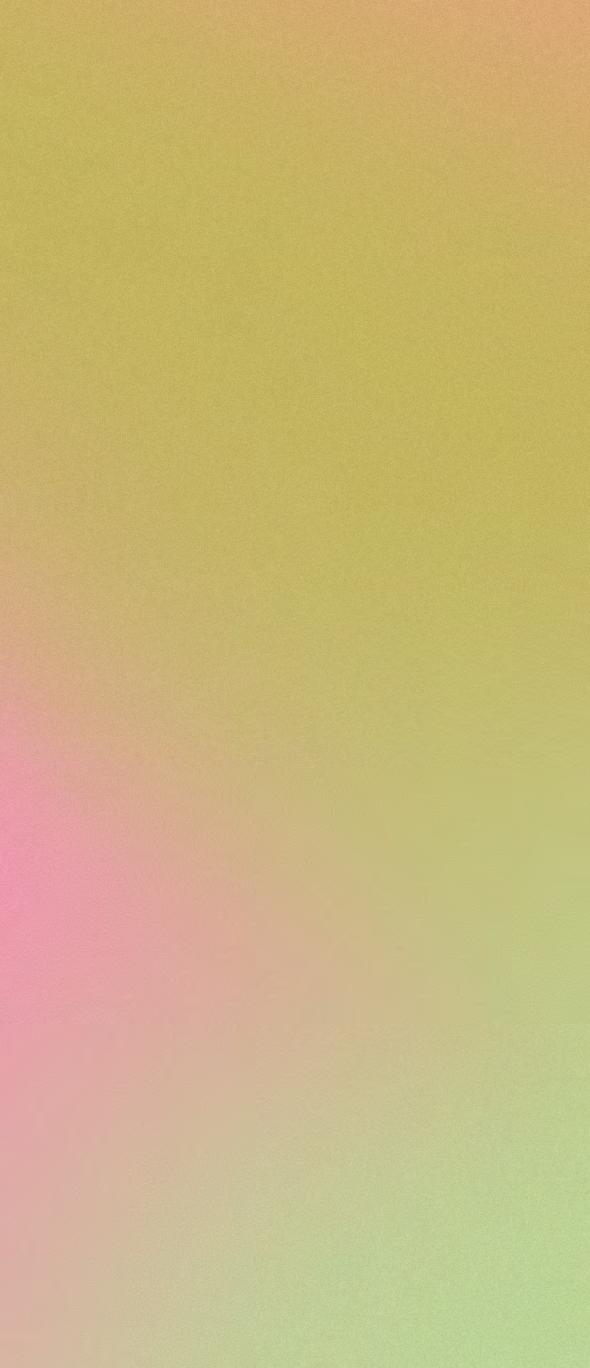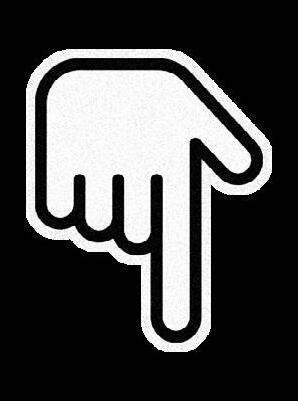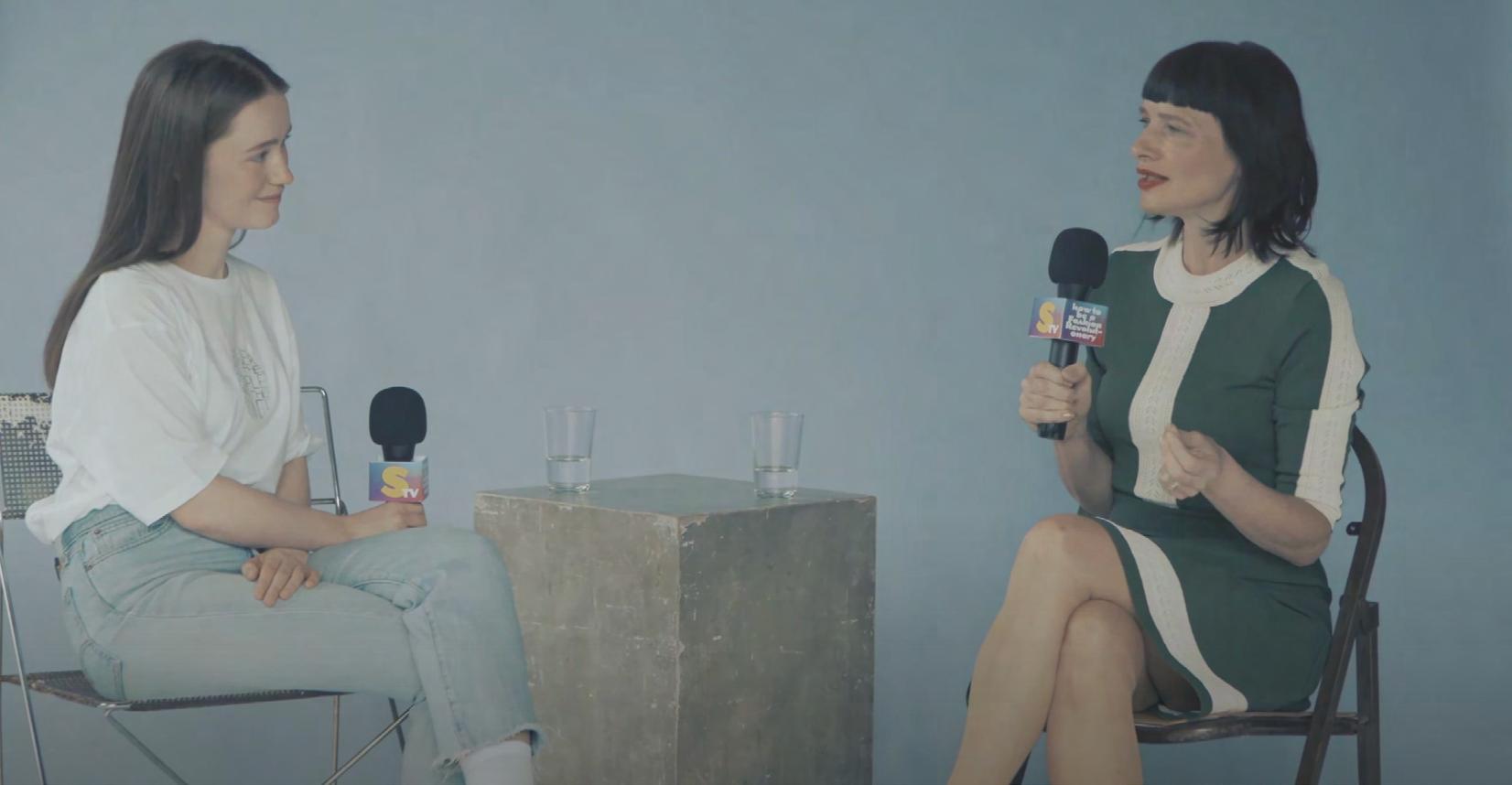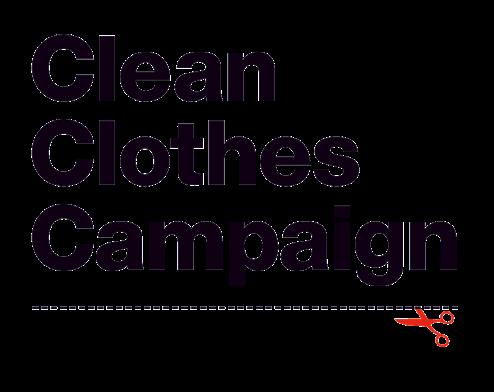FASHION REVOLUTION IMPACT REPORT





 Carry Somers, co-founder, Fashion Revolution
Carry Somers, co-founder, Fashion Revolution
The past year has unleashed the creative potential and ingenuity of our whole network, despite challenging circumstances. As we move forward to our 10th year and beyond, we will continue to create new pathways. We will invite unconventional mindsets into our network, holding true to our mantra: Be Curious, Find Out, Do Something. We will go beyond our borders, and past what feels comfortable. We will challenge ourselves, our community, the fashion industry, and policy makers. We will hold space for people. And we will continue to thrive on a cross-pollination of ideas and perspectives for the next ten years in pursuit of the mission and manifesto of Fashion Revolution.

I am always excited to see Fashion Revolution’s impact year on year, as we learn to keep tackling what matters most. And for me this year it was all about our Global Network, and watching so many of our teams around the world reach maturity. We are better when we work together, and we keep showing the world that our strength really does lie in our numbers, and our vision depends on a truly global outlook for impact. Once again and without a doubt, our leadership is about the collective work of the entire organisation, and as we approach the 10th anniversary of the Rana Plaza disaster, we can see how a truly global movement can spearhead positive changes.
Orsola de Castro, co-founder,Fashion Revolution



Fashion Revolution was founded in 2014 by Carry Somers and Orsola de Castro with the aim to increase transparency in the fashion industry and stand in solidarity with the people who make our clothes. Since then, it has grown to be the world’s largest fashion activism movement, mobilising citizens, brands and policymakers to make positive change.


Fashion Revolution is a global movement campaigning for a fashion industry that conserves and restores the environment and values people over growth and profit.
The key pillars of change which Fashion Revolution pushes for include shifting the culture of fashion production and consumption, incentivising fashion brands and retailers to improve their practices and advocating for policy which holds the industry accountable for its impact.
Our projects include: Fashion Revolution Week, a public campaign effort to increase awareness and inspire action, the Fashion Transparency Index, research analysing the social and environmental public disclosure of 250 of the world’s largest fashion brands, the Good Clothes Fair Pay campaign, a European Citizens’ Initiative for living wage due diligence legislation, and Fashion Open Studio , an initiative supporting the world’s most innovative designers within a regenerative fashion system.









All year round, we mobilise citizens to: Be curious, find out, do something. One of the most important ways to do that is by holding brands accountable on social media using our hashtags:
#WhoMadeMyClothes? Empowering people to demand greater transparency and accountability from fashion brands and standing in solidarity with workers throughout the supply chain. 946,000 times on Instagram
#WhoMadeMyFabric? Calling on brands to disclose their textile production sites, highlighting the labour-intensive nature of the fashion industry and sharing unheard voices. 10,500 times on Instagram
#WhatsInMyClothes? Demanding brands take urgent action on climate and biodiversity by holding them accountable for their sustainability policies and promises. 27,900 times on Instagram
#IMadeYourClothes Brands and producers share stories and messages from the people that make our clothes using the hashtag #IMadeYourClothes on social media. 259,000 times on Instagram
#IMadeYourFabric Brands and producers tell us #IMadeYourFabric, so we can connect more closely with people and processes beyond the first tier of the supply chain. 4,400 times on Instagram
#LovedClothesLast This is our way of spreading the powerful message that the most sustainable garment is the one already in our wardrobes, shifting the culture of consumption to a culture of care by empowering people to transform their relationships with what they wear. 217,000 times on Instagram
Our hashtags have reached an estimated 91 million people across social media over the last 12 months.



Global Network works together around the world to create positive and lasting change. Fashion Revolution is a registered non-profit organisation in the United Kingdom, with decentralised country offices and voluntary teams in 88 countries with over 500 dedicated members.

Fashion Revolution Week,

A street campaign in Kampala topromote clothing repair, involvingartists and performers as well as menders and makers.

A radio demonstration broadcast across Germany linked to a clothes swapping event in Cologne.

An interactive installation of clothing waste to engage the public with overproduction and overconsumption in Malaysia.

annual campaign
together the world’s largest fashion activism movement for



action.


This year, from Monday 18th-Sunday 24th April 2022, we collectively reimagined a just and equitable fashion system for people and the planet. The theme for Fashion Revolution Week 2022 was
The mainstream fashion industry is built upon the exploitation of labour and natural resources. Wealth and power are concentrated in the hands of a few, and growth and profit are rewarded above all else. Big brands and retailers produce too much too fast, and manipulate us into a toxic cycle of overconsumption. Meanwhile, the majority of people that make our clothes are not paid enough to meet their basic needs, and already feel the impacts of the climate crisis – which the fashion industry fuels.
During Fashion Revolution Week, we aimed to:
• Build momentum for new laws that require businesses to conduct due diligence on living wages
• Call on brands to radically reduce their environmental impact by shifting their focus away from growth
• Educate and inspire our global community on the real value of what we buy and wear
This year’s theme was inspired by our zine of the same name, so we held a virtual book club with Fashion Revolutionaries around the world, to discuss the topics of money, fashion and power and how they relate to the fashion industry in their local context. We loved connecting with our country coordinators to hear their views on this year’s theme, it was a valuable discussion that gave our zine a new perspective.

To launch our Good Clothes Fair Pay campaign, we held a panel discussion and Q&A with industry experts, exploring living wages in the fashion supply chain and introducing our new campaign. The panellists shone a light on the broken global fashion system, from the harrowing experiences of garment workers to the true value of our clothes to the accumulation of extreme wealth, and why properly enforced legislation is essential if we are to create lasting change. The message was clear: We need to take action now to radically transform the industry and drastically alter our relationship with our clothes.

This year we hosted a variety of in-person and online events to explore this year’s theme, collaborating with industry experts and our global community. Across six continents, events, campaigns and activities happened throughout the week, as we collectively reimagined a just and equitable fashion system. To kick off Fashion Revolution Week 2022, we held an Instagram live with our global network, highlighting the incredible work of our community.
We asked our community to share your fashion love stories during Fashion Revolution Week, encouraging ythem to reconnect with the clothes that are already in their wardrobe. Throughout the week, people shared photos, videos, letters, poems and stories dedicated to their beloved items of clothing. It was inspiring to see so many people boldly declare their love for their clothes, in a time where fashion is seen as disposable and trends don’t last for more than a year.










‘How to be a Fashion Revolutionary’ with Sigrid

Through exhibitions, presentations, talks, and workshops with emerging designers, established trailblazers and major players, we celebrate the people, products and processes behind our clothes.



The Fashion Open Studio events during Fashion Revolution Week 2022 demonstrated how our manifesto works in practice – for an industry that embraces alternative business models, preserves the environment and honours the people who make our clothes.
Our Fashion Open Studio designers gave us a lot of food for thought this year; from Argentinian brand MANTO’s workshop demonstrating ancient artisanal weaving techniques, to the Lagos Space Programme at Woven Threads that explored the multiple facets of sustainability, including circular design, traditional crafts, and a responsible approach to producing fashion.
Fashion Open Studio is Fashion Revolution’s showcasing and mentoring initiative since 2017.
The programme celebrated pioneering designers from Chile, Egypt, USA, Venezuela, South Korea, Zimbabwe, Czech Republic, France, Bangladesh and the UK will be taking part. Through short films, conversations, studio tours and workshops, attendees were inspired to make changes across the industry as well as in their own wardrobes.

Highlights
• FOS x FRW 2022: White Weft - The ecosystem of a jean
• The Art of Redeeming: Paulo Redeem for Fashion Open Studio 2022

• FOS x FRW 2022: OVERLAB - Paragliders to bags: a transformation

Fashion is one of the most damaging industries in terms of its pollution and greenhouse gas emissions. As a significant contributor to climate change, it is important to highlight some of the solutions the creative and innovative change makers in the fashion community are putting into practice. Tangible solutions and small-scale innovations have the potential to transform the burdensome impact of the fashion industry.
That’s why in November 2021, Fashion Open Studio joined forces with British Council to present a series of free digital and physical events in response to the themes of the United Nations Climate Change Conference COP26, Adaptation, Resilience and Nature.
Designers and brands from Argentina, Bangladesh, India, Indonesia, Nepal, South Africa, Thailand, Turkey and Zimbabwe, took part, showcasing climate solutions in practice and engaging the public in fashion-focused climate conversations.
“Fashion Open Studio engages with young and established brands, with the people who make our clothes, for irreverent and forward-thinking debates and workshops that stimulate different viewpoints – COP26 is a crucial moment to put forward viable alternatives to create much-needed change to the fashion system.”

In February 2022, we hosted a Showcase With a Difference, an exhibition featuring 10 designers with a focus on product and purpose. The showcase explored how the clothes in the exhibition were made, and gave us an understanding of why and how these designers are rejecting the industry’s bad habits. The aim was to change the ways we all think about our clothes and the processes and purpose behind them. The installation was brought to life by a programme of workshops and events demonstrating how clothes can be made in ways that are local, create and nurture community, promote wellbeing and positivity, and embrace more equitable business models that value the people and the planet over profit.
Showcase With A Difference took place at The Lab E20, a unique creative space in East London, and was supported by Get Living, Future City and Mayor of London. It was art directed by award-winning designer Matthew Needham, who specialises in combining materials, experience, and community to create works that are both educational and conscious, inspiring a symbiotic approach towards living our lives in parallel with the planet.


In March 2022, Fashion Open Studio took residence at Berlin Fashion Week with a series of designer open studios, short films, exhibitions and talks featuring an innovative cohort of local and international designers.



This ongoing programme, now in its third season at Berlin Fashion Week, was designed to change the way we think about our clothes and to highlight real solutions in practice. Fashion Open Studio invited the city to meet the designers, understand their work, and create a space for dialogue and an exchange of ideas and information.


Fashion Open Studio co-curated the 2022 edition of the State of Fashion biennale in Arnhem with NOT____ENOUGH Collective, a group of South-American critical fashion practitioners who explore the roles of oppressor and oppressed in fashion.
With the central theme ‘Ways of Caring’, we went in search of ways to make the fashion industry more sustainable and caring and show solidarity with the people and processes behind our clothes. Alongside artists and makers from all over the world and the public in the city of Arnhem and beyond, we worked on repairing the broken relationship between the production of fashion and the way we buy, wear, care and share clothing.
Throughout the 5-week programme of walks, tours, talks, exhibitions, workshops and conferences across the city, we welcomed over 38,000 visitors. We are so proud to have helped curate this unique programme and make space for conversations to happen, for different perspectives to be heard, and for fashion to be thought about in different ways. Together, we took fashion off its aspirational pedestal and brought it back to the community, where it belongs.
Find out more



In 2022, we released the seventh annual edition of the Fashion Transparency Index. This year, 250 of the world’s largest fashion brands and retailers were reviewed and ranked according to what information they disclose about their social and environmental policies, practices and impacts, in their operations and supply chain.

This Index is a tool to push and incentivise the world’s largest fashion brands to be more transparent about their social and environmental efforts. Fashion Revolution believes that transparency is foundational to achieving systemic change in the global fashion industry. This is because a lack of visibility of supply chains allows exploitative, unsafe working conditions and environmental damage to thrive while obscuring who has the responsibility and power to redress these issues.

Increased transparency enables workers’ rights and environmental advocates to identify, report and redress suspected abuses and helps brands and retailers to better track and manage social, environmental and governance risks that affect their business.
The Fashion Transparency Index 2022 has been read over 20,600 times since publication in July 2022.

It has received 363 pressmentions, reaching 2.7 millionreaders, viewers and listeners.
It reached 493,000+ users on social media and received 21,000+ engagements.
Progress on transparency in the global fashion industry is still too slow among 250 of the world’s largest fashion brands and retailers, with brands achieving an overall average score of just 24%, up 1% from last year. This year’s Fashion Transparency Index reveals a lack of transparency in several crucial areas. A highlight of key findings includes:
• More major brands than ever, (48%) now publish a list of their first-tier manufacturers. However, 50% of major brands still disclose no information about their supply chains.
• Most major brands and retailers (96%) do not publish the number of workers in their supply chain paid a living wage.
• Only 13% of brands disclose how many of their supplier facilities have trade unions.
• Just 12% of brands publish a responsible purchasing code of conduct.
• 94% of major brands neglect to disclose the prevalence of gender-based labour violations.
• Only 3% of brands voluntarily disclose the annual ethnicity pay gap in their own operations.
• Almost half of major brands (46%) publish targets on sustainable materials yet only (37%) provide information on what constitutes a sustainable material
• 85% of major brands still do not disclose their annual production volumes.
• Only 24% of brands disclose how they minimise the impacts of microfibres.
• Only 11% of brands publish their supplier wastewater test results.
• Only 29% of major brands and retailers publish a decarbonisation target covering their operations and supply chain - only 34% of brands publish their carbon footprint at the processing level and 22% at the raw material level.
“Since 2018, OVS’s transparency has been assessed every yearby the Fashion Transparency Index of Fashion Revolution. Throughthis initiative, we were able to identify areas of action to improvethe transparency of our operations. We truly think that we don’tneed to wait for perfection to transparently communicate what wedo. We know we still have a long journey ahead but transparencyis a powerful tool to improve day by day.”
OVS
Our comprehensive assessment and ranking of the world’s largest fashion brands on their public disclosure performance has contributed to measurable progress and spurred millions to join the call for greater transparency. A key learning for us is that brands who have engaged with us over a longer period of time are likely to be more transparent, providing a strong rationale for continuing the Fashion Transparency Index in years to come. For example, 81% of brands included in the global index since 2017 have increased their levels of disclosure in that time (73 brands out of 90), some very significantly. Brands such as Calzedonia, Ralph Lauren, The North Face and The United Colours of Benetton have increased their disclosure levels by 39% to 45% in the last five years.
Percentage of brands publishing first-tier manufacturers:
2022
(250 brands) 2021 (250 brands)
(200 brands) 2018 (150 brands) 2017 (100 brands)
Much of the progress centres on the fundamentals of transparency at a macro level. For example, 118 brands now publish a list of their first-tier manufacturers compared to just five brands publishing this in the 2016 edition. There are many examples of individual brands making changes as a result of scrutiny. For example, this year’s lead scoring brand, OVS (the largest Italian retailer with more than 1200 stores in 35 countries), went from scoring 35% overall in 2020 to 78% in 2021 and 2022 by committing to align with FTI methodology.




Millions of people work in textile, clothing and footwear production around the world. The vast majority are not paid enough to fulfil their basic needs.
Launched in July 2022, Good Clothes, Fair Pay is a campaign demanding living wages for garment workers. Over the next twelve months, we are collecting 1 million signatures from EU citizens in order to push for gamechanging new EU legislation.



This legislation would require any fashion companies selling in the EU to conduct living wage due diligence across their global supply chains.






26k+ signatures across 27 EU countries collectively mobilising in solidarity with the people who make our clothes

60+ international campaign partners including civil society, tradeunions, aid and development bodies, fashion councils, labour rights NGOs,MSIs, environmental organisations,coalitions and networks.
142 MEPs have been engaged in the campaign, including Lara Wolters, Manon Aubry, Anna Cazzavini & Raphael Glucksmann.
Our Citizens’ Committee has 15 members across 10 EU countries, is 80% female and features experts from the worlds of investors, corporate consulting, trade unions, civil society, sustainability, academia, commercial law, policy, government and campaigning.
@goodclothesfairpay has reached 7k followers on Instagram
Inspired academics and citizens in our grass-roots campaigning efforts. One example is that Technical University in Dublin has tasked its sustainability postgraduate students with amplifying the campaign as part of their final year project.






The campaign has been shared widely by press and influencers from around the world:
Small But Perfectly Formed is a project which recognises the need for and enables the acceleration of SMEs towards sustainable and circular businesses. It also acknowledges that those same enterprises should be integrated into a wider system that truly puts people and planet before profit.
Partner organisations:


Over its 30 month duration the project will develop a network of stakeholders from across the industry that can exchange knowledge, learnings and best practices to effect wider systemic change in the fashion SME sector.
• A unique accelerator programme for small, sustainable fashion businesses in Europe.
• A bespoke online network to create connections, enable knowledge sharing and encourage collaboration across borders.
• A series of open-source toolkits written by industry experts using learnings from international workshops
• A showcasing programme of engaging Fashion Open Studio events.
• An open call for business support organisations to host events to engage stakeholders from the circular fashion ecosystem.
• Policy dialogues, position papers and panel events for engaging with European policymakers on issues impacting fashion SMEs.

Between June and October 2022 we ran an open call for proposals for a unique accelerator programme of mentoring, funding and showcasing that connects fashion businesses across borders by encouraging transnational collaboration. After 117 brilliant applications, we selected 28 transnational projects to participate in an 18-month development programme which includes an 8-month accelerator programme with business mentoring, showcasing initiative and research & development grants of over €10,000.




In May 2022, Fashion Revolution showcased our very own garden at the world-famous RHS Chelsea Flower Show. Inspired by the fundamental role of plants in fashion – as dyes, fibres, floral motifs and botanical folklore – garden designer Lottie Delamain created a textile-inspired garden solely featuring plants that can be used to make or dye our clothes.

The philosophy behind the Textile Garden is all about seeing the potential in the resources we have on our doorstep and exploring how we can utilise them in more creative ways, showcasing native UK wildflowers and sowing a seed of curiosity about the materials, dyes and chemicals in our clothes. Visitors to the garden were inspired to re-imagine the link between what we can grow and what we wear, showcasing creative possibilities and innovative thinking around how we can use our resources to create more sustainable solutions.
Find out more

“We can have any fabric, material, ink, or dye shipped directly to our door. We have a bottomless choice of materials from which to design and create. And we are wholly divorced from the practices, skills and methods required to grow and produce these materials.
This became the founding principle behind the garden – I wanted to challenge myself to create something using the resources we have readily available, using a restricted palette that would force a new creative approach, that explored the lost connection between plants and textiles.”
Lottie Delamain, Garden Designer
Restorying Riverscapes explores the history of the textile industry on the riverscape of the Churnet at Leek, Staffordshire.
This project took place throughout 2022, bringing together Fashion Revolution and scientists from Keele University and Loughborough University alongside local community groups. Together, we examined historical changes in the Churnet riverscape as a result of textile production in the area.
Citizen science was a vital part of telling a different story about the history of the textile industry on the Churnet and its environmental impact. Local residents got involved by taking sediment and water samples for analysis, examining local archives and more.



The project has been diffused widely, on BBC Midlands Today, BBC One and BBC World News as well as the Financial Times, far surpassing expectations in terms of the global communications around the initial project. Local and regional communications have already sparked discussion in the area, providing threads leading to where archival information in the community may need to be reexamined.

In October 2022, we’ll publish a full report of the findings from the results of microfibre testing, and an analysis of the social science research.

Exploitation thrives in hidden places. There are millions of workers beyond the first tier of the fashion supply chain, including the people who make our fabric, who remain out of sight.
At Fashion Revolution, we believe that anyone, anywhere should be able to find out how, where, by whom and under what conditions their clothes are made. This is why we have been calling for greater transparency and accountability across the global fashion industry by asking brands, ‘Who made my fabric?’
This report, published in November 2021, is an update of our baseline research, following on from the success of our #WhoMadeMyFabric campaign.
more

The November 2021 report provides the first periodic update on the supply chain transparency efforts of 63 major brands and retailers with reported links to textile suppliers in Tamil Nadu.
Main findings:
brands are disclosing first tier manufacturers (in full or in part)

brands are disclosing a selected number of textile production sites (spinning, knitting, weaving & fabric production)
brands are disclosing a selected number of processing facilities (printing, dyeing, laundering, embroidery)
Only two brands are disclosing a full list of their textile production sites.
This means that only 44% of brands reviewed are disclosing at least some of their textile production sites. This is an increase of 13 percentage points in the original scorecard in October 2020.
Throughout the last 12 months, we have followed an ambitious global policy advocacy strategy, including strengthened partnerships with organisations and policymakers. Our goal is to inspire, influence and improve efforts towards robust legislation that holds the fashion industry accountable for its social and environmental impacts. Here are some of the policy advocacy partnerships we have been part of:
• Co-led effort with Fair Trade Advocacy Office to build a broad coalition of 65+ CSOs across Europe to respond to the publication of the EU Textile Strategy.
• Contributed to workshops organised by the European Commission on the social aspects of the European Green Deal and green transition.
• Contributed to working groups to influence the trajectory of the UNFCCC Fashion Industry Charter on Climate Action and the UNECE Traceability & Transparency standards.
• Lobbied leaders of the G7 to demand concrete measures to combat forced labour in the Uyghur region.
• Called on the British government to ban the sale of washing machines without fitted microfibre filters.
• Wrote to the European Commissioner for Internal Markets calling for the EU to develop measures to break the vicious cycle of cheap, synthetic material reliance.
• Urged major fashion brands included in our Fashion Transparency Index to responsibly exit Myanmar in line with international guidance.
• Petitioned for world leaders at COP26 to recognise the impactful role fashion can play in reaching net zero and climate.
• The International Accord on Health and Safety in the Textile and Garment Industry is a legally-binding agreement between brands and trade unions which ensures that no worker needs to fear fire, building collapses or other accidents.
• The Accord’s expiry in May 2021 ran the risk of it turning into another industryled voluntary tool, without legal enforcement and trade union governance
• Fashion Revolution successfully lobbied 49 major fashion brands included in our Fashion Transparency Index (FTI) to sign the renewed Accord in closed-door conversations regarding the impact on their FTI scoring.
• The renewed International Accord is a binding agreement which protects the lives of millions of garment workers from fire, structural and electrical safety risks. This agreement will also enable expansion to other countries such as Pakistan.
• Fashion Revolution lobbied leaders of the G7 to demand measures to combatforced labour in the Uyghur region linked to the fashion industry.
• The EU has since proposed legislation to prohibit products made with forcedlabour on the EU market. The proposal covers all products, namely those madein the EU for domestic consumption and exports, and imported goods.
• Member States will assess the risks of forced labour based on due diligencemechanisms, including submissions from civil society and databases offorced labour risks.
• Fashion Revolution advocated for the Garment Worker Protection Act (SB62) a California bill that will improve working conditions by ensuring that brands share in the responsibility for garment worker pay under the law. SB62 addresses wage issues, including piece-rate pay and wage theft violations.
• Following the successful integration of SB62 into California law, US Senator Kirsten Gillibrand introduced the FABRIC Act. If passed, the FABRIC Act would extend protections to nearly 100,000 American garment workers by improving working conditions, reforming the piece-rate pay scale and investing in domestic apparel production.






Shifting the way people think about and engage with their clothes.

Over the next five years, we will...
• Develop a more autonomous Global Network to better mobilise local communities and bring people together around the world to take collective action
• Expand our audience in order to increase their understanding of the social and environmental impact of our clothing.

INDUSTRY CHANGE: Building greater transparency and accountability across the value chain.
Over the next five years, we will...
• Accelerate the impact of the Fashion Transparency Index to incentivise brands towards increased disclosure.

• Strengthen relationships with stakeholders across the fashion supply chain to guide our campaigning efforts.


